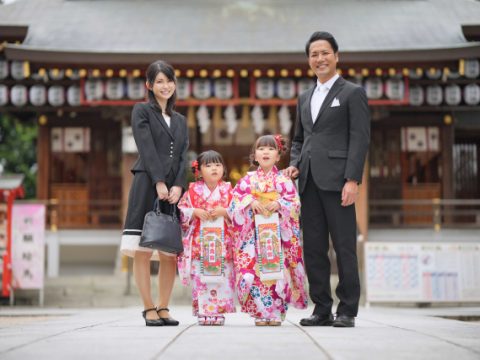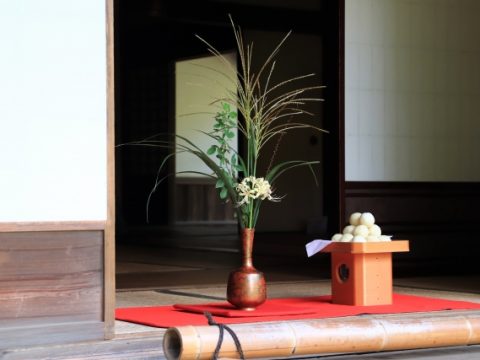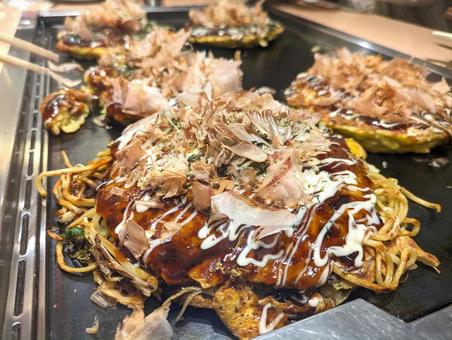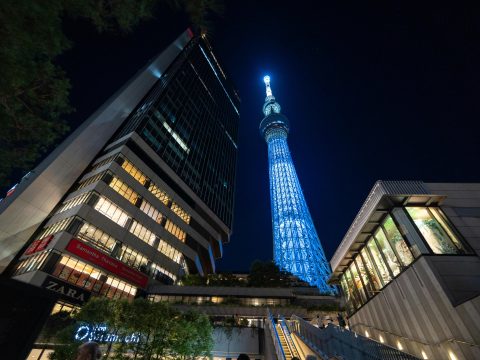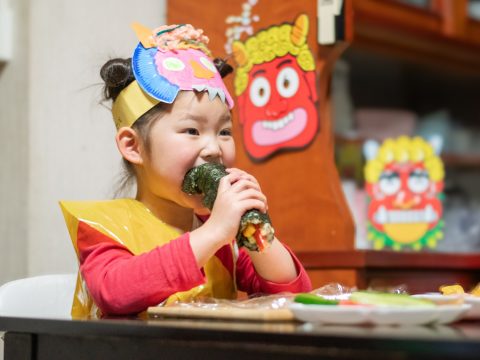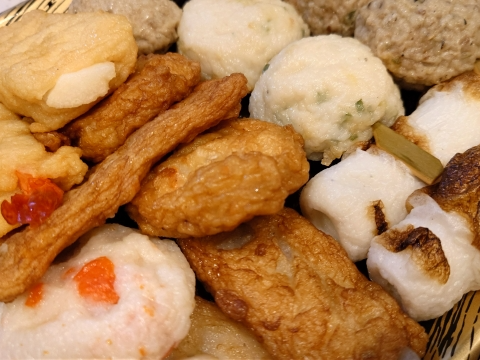Katsuo (鰹)
JAPANESE FOODS
03.05.2023
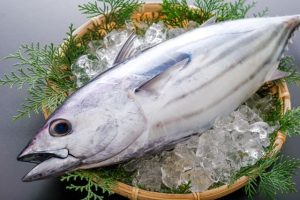
When I think of food in spring/summer, I always think of fresh Katsuo. It is currently in season, so if you live in Japan, you will probably see more Katsuo in the market.
What is Katsuo?
Katsuo is one of the beloved fish used in Japanese cuisine for at least 8000 years since Jyomon era. It is a medium-sized fish with an average body length of about 50cm and lives in tropical and temperate waters worldwide. The English name of Katsuo is Skipjack tuna or Bonito.

Why Katsuo has seasons?
Katsuo is a migratory fish, so it changes location between seasons. The majority of Katsuo fished in Japan inhabit the South Pacific Sea during the winter. From April through May, they start to travel toward north along the Pacific coast of mainland Japan. The destination is the Sanriku coast, where warm and cold currents collide, providing an abundant feeding ground. The Katsuo fished during this migratory season is called “Hatsugatsuo (初鰹)” meaning the first Katsuo (first catch) of the season. Hatsugasuo is lean, firm, light, and fresh.

There is another season of Katsuo
Once Katsuo reaches the Sanriku coast, they stop traveling north and feed in the rich waters during the summer. Then, from September to October, as water temperature drops, they start traveling back south to mate and spawn. It is considered a second Katsuo season. The Katsuo caught during this time of the year is called “Modori Katsuo (戻り鰹),” meaning returning Katsuo. After feeding all summer, Modori Katsuo has more fat content compared to Hatsugatsuo. As a result, it has a deep, rich, buttery flavor.

How to eat Katsuo?
Many people enjoy the fresh catch as Sashimi or “Katsuo no tataki,” meaning lightly seared Katsuo. Katsuo no tataki is usually enjoyed with soy sauce-based dipping sauce along with some condiments like ground ginger, garlic, scallion, and/or thinly sliced onions. It is such a refreshing food to enjoy during the rainy season. So enjoy the first catch of the season while it last!

Eri Palmer
Eri grew up in Japan. She came to U.S. as an international student, and decided to stay in the country. Cooking is one of her passions, and she loves to cook Japanese food for her children.
Read previous articles by the writer
Read latest articles
KEYWORDS
- # PICKPICK
- # Resume
- # alcohol
- # Rice
- # Soup
- # winter food
- # Fast Food
- # seafood
- # spicy foods
- # raw food
- # fermented food
- # Transportation
- # MEAT
- # Edo culture
- # suits
- # clothing
- # drink
- # fish
- # seasoning
- # Japanese New Years Foods
- # Toshikoshi soba
- # Osechi Ryori
- # Ozoni
- # Christmas
- # Japanese fusion pasta
- # Wafu Pasta
- # Japanese Hot Pot
- # なべ
- # 鍋
- # Miyazaki
- # Chicken Nanban
- # Karamen
- # Autumn Wagashi
- # Mushi-yokan
- # Imo-yokan
- # Japanese Autumn Fruits
- # Autumn
- # Vending Machine
- # fall
- # dango
- # Chestnut rice
- # saury
- # Mushroom
- # Rice vinegar
- # Japanese condiments
- # 調味料
- # Sake
- # Mirin
- # Soy sauce
- # Japanese Noodles
- # Udon
- # Ramen
- # Yakisoba
- # Soba
- # Japanese Seaweed
- # 海藻
- # かいそう
- # Payslip
- # Training
- # Japanese summer foods
- # 和菓子
- # Wagashi
- # ryokucha
- # 夏
- # 飲み物
- # Ramune
- # ラムネ
- # Pokari Sweat
- # ポカリスエット
- # Calpis
- # カルピス
- # Mugicha
- # ume
- # 梅
- # うめ
- # umeshu
- # job hunting
- # tofu
- # Recruitment in Japan
- # miso
- # Japanese cuisine
- # Yellowtail and bonito
- # Children’s Day
- # Kashiwa Mochi
- # Chimaki
- # fruits
- # Kusamochi
- # Types of Agriculture in Japan
- # bread
- # パン
- # パン屋さん
- # japanese bread
- # shokupan
- # meal blead
- # anko bread
- # 桜
- # さくら
- # cherry blossom
- # visa
- # hanami
- # omotenashi
- # sakura
- # おもてなし
- # Japanese hospitality
- # oshibori
- # wet hand towel
- # hand towel
- # restaurant
- # Commuting in Japan
- # Women-only cars
- # Exit gate
- # japanese train
- # train
- # valentine
- # Japanese sweets
- # 朝食
- # Japanese Breakfast
- # Breakfast
- # Japanese
- # 日本
- # healthy
- # persimmons
- # hoshigaki
- # HR
- # work in Japan
- # jinji ido
- # corporate systems
- # Japanese work culture
- # bento
- # ekiben
- # shinkansen
- # omiyage
- # train station
- # Japanese culture
- # work culture
- # mentaiko
- # umeboshi
- # Japanese snacks
- # potato chips
- # Japanese potato chips
- # Japanese writing
- # seaweed
- # konbu
- # ocean foods
- # shio konbu
- # dashi
- # miso soup
- # food processing
- # pear
- # nashi
- # sweet potato
- # japanese sweet potato
- # stingray
- # satsuma imo
- # food value chain
- # homecooking
- # agriculture
- # Japanese homecooking
- # farming
- # nikujaga
- # shojin ryori
- # meat and potatoes
- # traditional foods
- # comfort food
- # buddhist food
- # manufacturing
- # factory
- # eihire
- # vegetarian
- # food and beverage
- # izakaya
- # yatai
- # japanese festival
- # taiyaki
- # matsuri
- # summer
- # Ikayaki
- # smart agriculture
- # shaved ice
- # kakigori
- # かき氷
- # summer dessert
- # Japan
- # Japanese foods
- # dessert
- # fruit
- # matcha
- # icecream
- # Pikcup
- # Pikc up
- # Pcikup
- # skilled labor visa
- # working visa japan
- # Dineer Table in Japan
- # Japanese manner
- # Japanese food
- # Japanese Table Manner
- # Chopsticks
- # Japanese traffic signs
- # traffic information
- # road rules in Japan
- # chocolate
- # green tea
- # Osaka
- # Work Japan
- # Japanese company
- # ikura
- # sushi
- # nigiri
- # wasabi
- # PCIK
- # PICK UP
- # PICK
- # PICKUP


